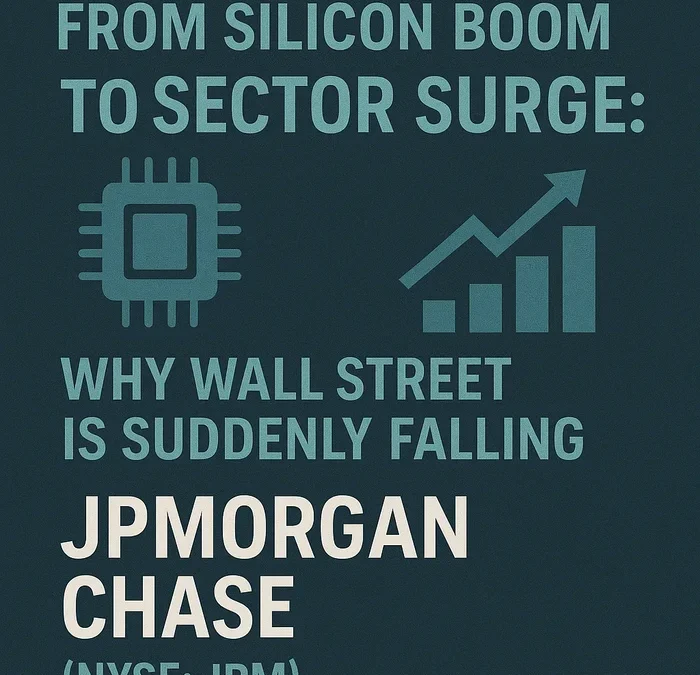Tech Still Rules — But Something Changed in June
June 2025 was supposed to be just another chapter in the AI mega-rally story. Nvidia (NASDAQ: NVDA) crossed a $3.9 trillion market cap. Microsoft (NASDAQ: MSFT) reached new highs. And Apple (NASDAQ: AAPL) staged a quiet comeback. But underneath the surface of the Silicon-driven surge, something more subtle was taking place.
Look at the heat maps. Industrial giants like Honeywell, Deere, and Caterpillar quietly gained over 8–12% this month. Utilities bounced after months of lagging. Banks found buyers. Suddenly, market breadth wasn’t just improving—it was exploding.
The S&P wasn’t just being carried by five stocks anymore.
The News That Changed the Mood
The catalyst wasn’t flashy. It was three-fold:
- Middle East Ceasefire: The Iran–Israel truce lowered oil and volatility, restoring calm.
- Rate Cut Hopes: Powell’s comments and BIS analysis signaled global monetary easing by Q3.
- PCE Data & Inflation: May PCE cooled to 2.3%, raising probability of a July rate cut.
Together, these signals gave institutional investors the green light to rotate out of momentum tech and into more cyclical, rate-sensitive sectors like banks, industrials, and even utilities.
Financials Love Lower Rates
Take JPMorgan Chase (NYSE: JPM). The stock jumped 4.3% this week alone. Why? A falling interest rate environment means more attractive loan growth, better consumer credit demand, and stronger fee-based income (especially in wealth management).
Valuation check:
- P/E: ~10.8x — still relatively cheap
- Dividend Yield: ~2.9%
- Net Interest Margin: Stable at ~3.0%
Banks thrive when rates are not crushing credit demand. And now, with the Fed signaling a turn, financials are back on the menu.
Industrials: The Quiet Giant Awakens
Caterpillar (NYSE: CAT) is a bellwether here. The company has had a muted few months due to fears over slowing global growth and high interest rates hitting capital expenditure.
But the tide’s turning. Global manufacturing PMI is improving. Infrastructure spending in the U.S., India, and ASEAN is still climbing. And now, with rate pressures easing, buyers are returning.
CAT fundamentals:
- Operating margin: 18.7% (strong for industrials)
- EPS growth YoY: 12%
- 2025 forecast: solid double-digit top-line growth if global capex rebounds
The technicals? Bullish breakout over $320 resistance. Volumes rising. Analysts upgrading.
Utilities: Yield Seekers Rejoice
Utilities have been left for dead. Why hold something with a 3–4% yield when bonds offer the same with less risk?
But with bond yields slipping again (10Y under 4.15%), dividend names like NextEra Energy (NYSE: NEE), Duke Energy (NYSE: DUK), and Southern Co. (NYSE: SO) are regaining relevance. Income-seeking investors, especially retirees and institutions managing risk, are coming back.
NextEra Check-In:
- Dividend Yield: 3.1%
- PEG Ratio: 1.6 (modestly priced growth)
- EPS CAGR (2023–25): 6.4%
If bond yields fall further, the utility trade isn’t just back—it may outperform.
Investment Sentiment: Rotation, Not Reversal
This isn’t a wholesale dump of tech. It’s diversification. Traders are locking in gains from mega-cap AI names and spreading capital across other underloved but fundamentally strong sectors. It’s the classic “breadth expansion” that market strategists love to see in a lasting bull market.
That’s good news if you missed the AI rally—or if you’re looking for value outside of stretched valuations.
Industry Implications: Cyclical Bull Case Awakens
- Banks: Rising M&A activity + loan growth = better earnings next 2 quarters
- Industrials: Rate cuts + global capex = order books surge in 2H 2025
- Utilities: Bond yield drop = return of yield-seeking institutional inflows
This sectoral shift could herald the beginning of a cyclical bull market led by non-tech names. That’s rare, and very profitable if timed right.
Bottom Line – What Should Investors Do?
If you’re overexposed to tech and wondering what to do next, this rotation is your moment.
For traders: Look for follow-through in industrial ETFs (e.g., XLI), bank ETFs (e.g., XLF), and utilities (e.g., XLU). Confirm volume spikes and positive relative strength.
For long-term investors: Rebalance portfolios. Sectors like financials and industrials are showing strong upside with improving macro support and relatively low valuations.
For income seekers: Utilities finally offer a risk-adjusted yield edge again—especially if rate cuts hit by September.
This isn’t the end of the tech trade—but it might be the beginning of a much broader one.
Wall Street’s finally remembering there’s more to a portfolio than silicon. And if this trend holds, the winners of H2 2025 might be the very stocks that spent the first half stuck in the shadows.

